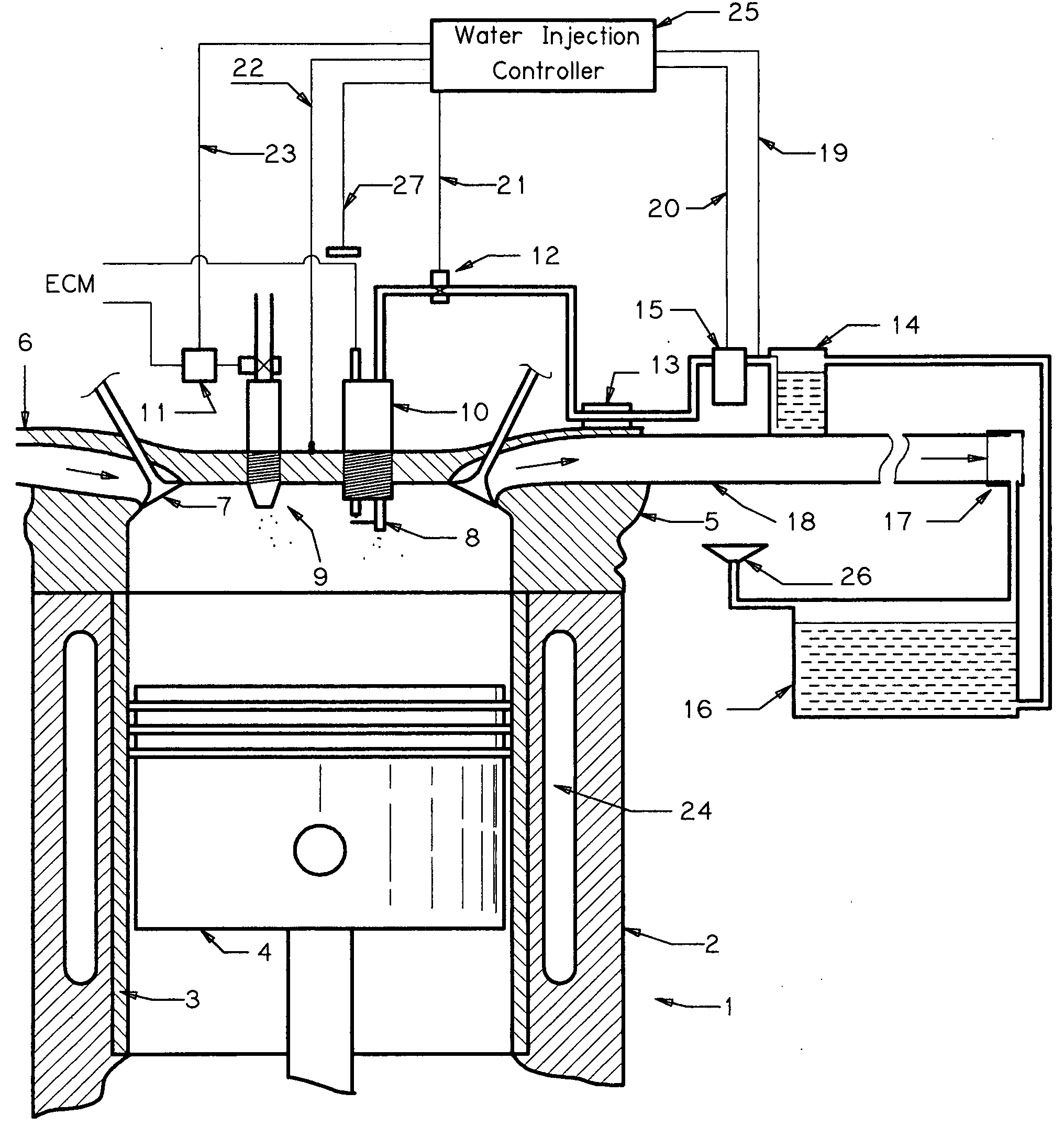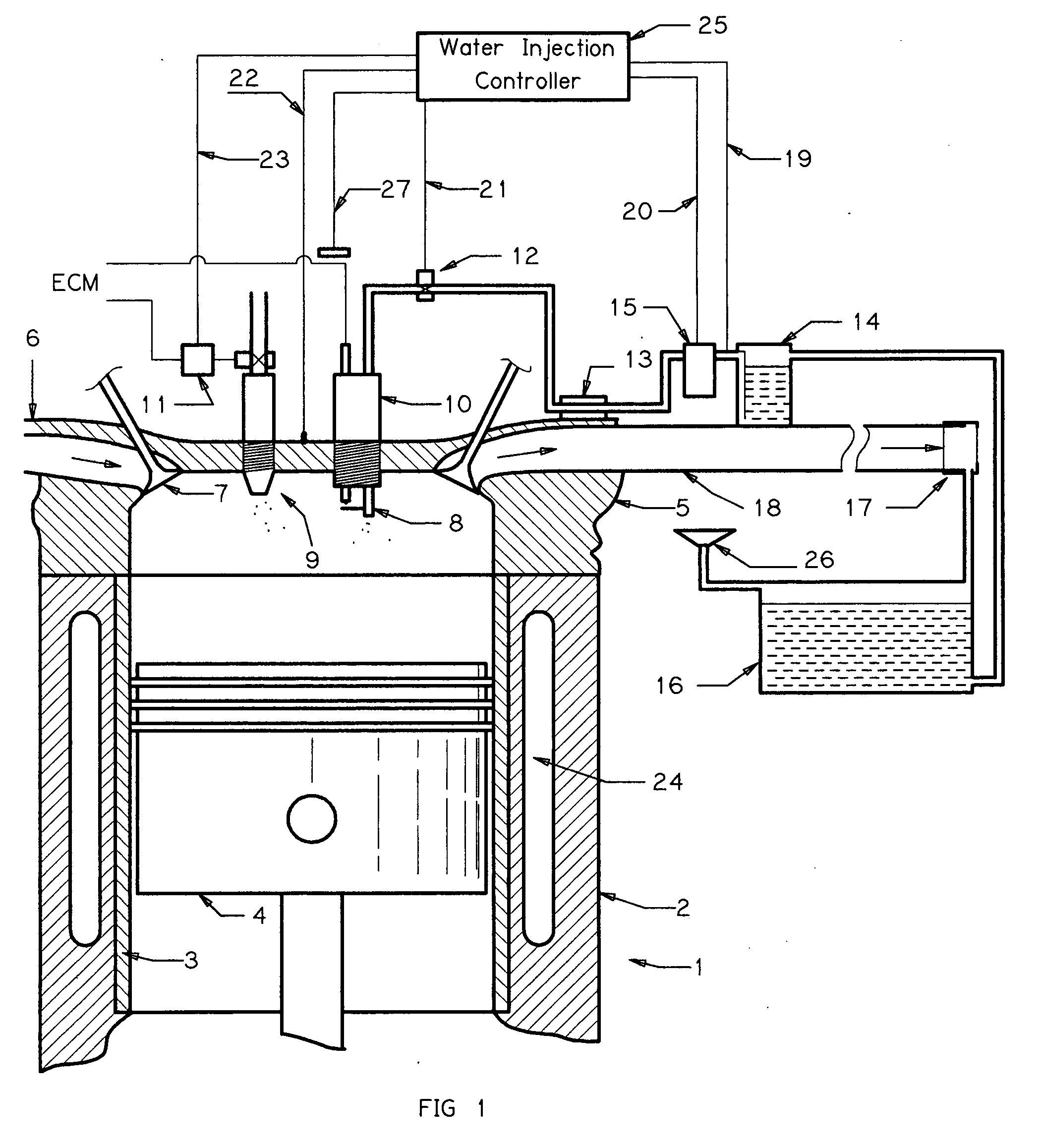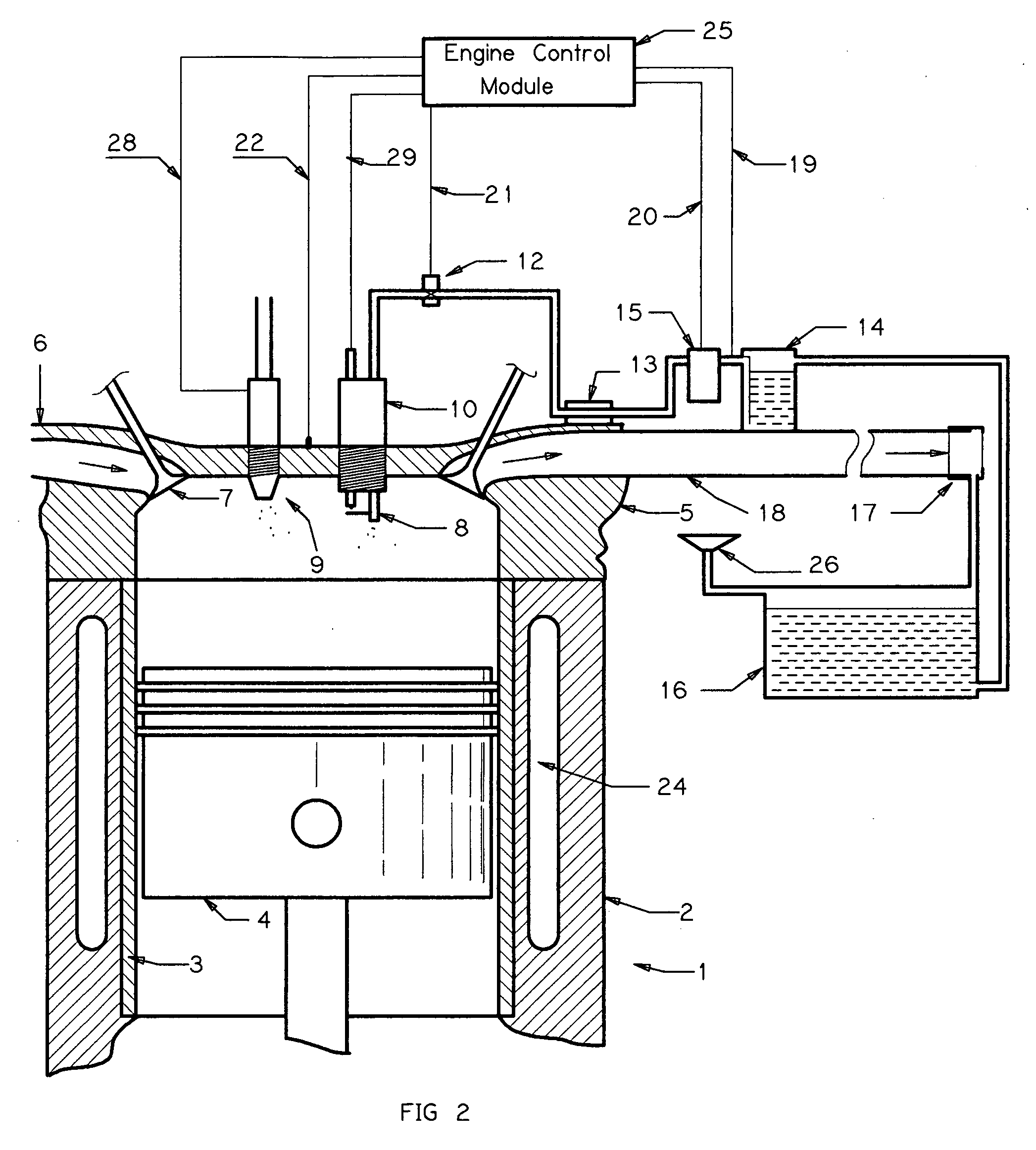Steam Combustion Engine
a combustion engine and steam technology, applied in the field of internal combustion engines, can solve the problems of unstable imbalance motion in power-train systems, limited water injection effectiveness, waste heat generation, etc., and achieve the effect of improving the fuel efficiency of existing vehicles or new vehicles and reducing the amount of fuel injection
- Summary
- Abstract
- Description
- Claims
- Application Information
AI Technical Summary
Benefits of technology
Problems solved by technology
Method used
Image
Examples
Embodiment Construction
[0021]With reference to FIGS. 1 and 2, in which like components in the two drawings are label with the same number, a steam combustion engine 1 in accordance to an aspect of the present disclosure comprises of engine block 2, cylinder 3, piston 4, engine head 5, air intake manifold 6, fuel injector 9, water injection spark plug 10 with water nozzle 8, exhaust manifold 18, lower water tank 16, upper water tank 14, water pump 15 and water injection controller 25.
[0022]The engine cycle starts with intake stroke, wherein the piston 4 moves away from the cylinder head 5 creating vacuum, pulling fresh air from the intake manifold 6 through the open intake valve 7. The fuel injector 9 sprays combustible fuel into the combustion chamber. The air / fuel mixture is usually controlled at 14:1 ratio for complete burn.
[0023]In the next cycle, compression stroke starts where the piston moves toward the cylinder head compressing the air / fuel mixture. At the end or close to the end of compression str...
PUM
 Login to View More
Login to View More Abstract
Description
Claims
Application Information
 Login to View More
Login to View More - R&D
- Intellectual Property
- Life Sciences
- Materials
- Tech Scout
- Unparalleled Data Quality
- Higher Quality Content
- 60% Fewer Hallucinations
Browse by: Latest US Patents, China's latest patents, Technical Efficacy Thesaurus, Application Domain, Technology Topic, Popular Technical Reports.
© 2025 PatSnap. All rights reserved.Legal|Privacy policy|Modern Slavery Act Transparency Statement|Sitemap|About US| Contact US: help@patsnap.com



